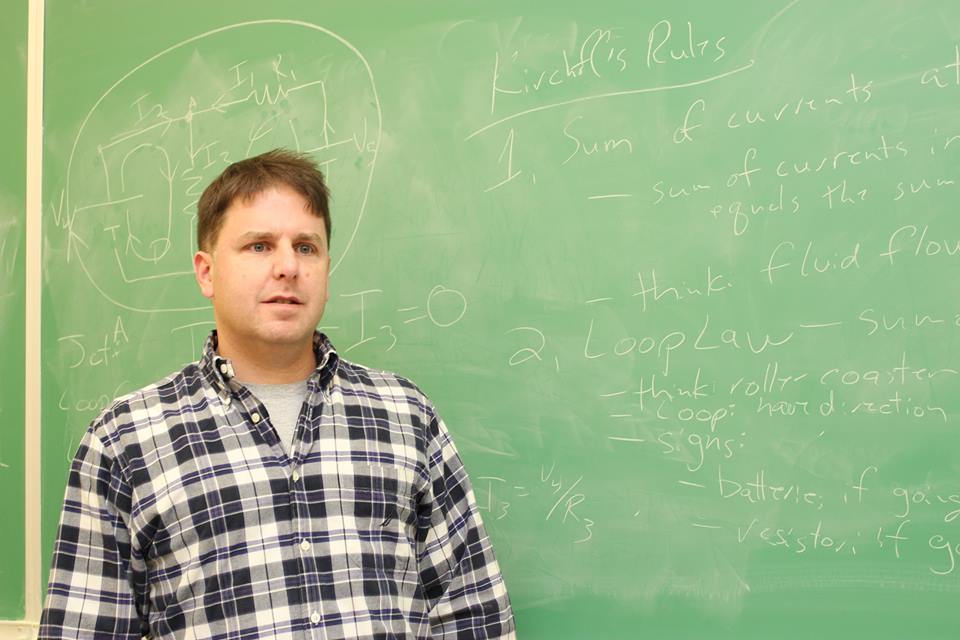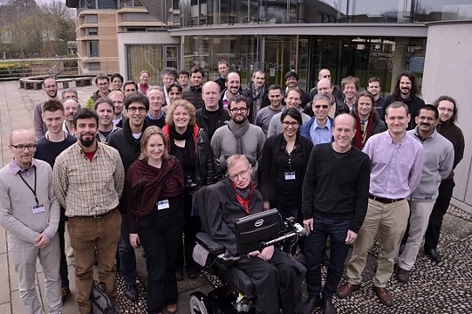Computational Astrophysics & Cosmology
A major problem in astrophysics is understanding the process which
powers some of the most energetic events observed, namely gamma ray
bursts (GRBs)
and active galactic nuclei (AGN).
That black holes
are involved is well accepted but the details of the processes
are still mysterious. A strong magnetic field, plasma pressure, and
black hole rotation all play roles in converting energy into highly
collimated jets.
Black holes and extremely dense stars called neutron stars are abundant
and involve very strong gravity. So much so that their motion disturbs
spacetime similar to the way
a tossed rock disturbs a pond's surface and produces
waves. Binaries composed of black holes and neutron stars (so-called
compact object binaries) produce gravitational waves.
We have not detected such waves yet, but the continued advancement
of gravitational wave detectors such as
LIGO
and Virgo promise an
entirely new view of the universe. What will these gravitational
signals tell us about the far reaches of the cosmos? Will concurrent
observations of both gravitational and electromagnetic (light) radiation
reveal more than the sum of their parts?
Also see this magazine article in Physics World (PDF)
and this short movie on LIGO
Cosmology has made tremendous strides in the past two decades
measuring the properties of our Universe. The problem is now
to explain how the universe came to be this way. Did inflation
smooth out things, and if so, how did inflation itself begin?
Is the universe that we observe part of some collection of
regions ("bubbles") with different properties? Were cosmic
strings created in the early universe, and, if so, how might we
observe them?
|
High Performance Computing
Studying such interesting phenomena numerically involves the
solution of sets of complicated, nonlinear differential equations,
and for many of the problems the computations are extremely demanding.
For example, to calculate what happens as two neutron stars orbit
each other, radiate gravitational waves, and ultimately merge requires
a supercomputer with hundreds of processing cores running for more
than a month.
Various techniques and technologies are exploited to shorten processing
times. Two examples are adaptive mesh refinement (AMR)
and distributed computing.
With AMR, a code is programmed to determine where numerical
precision is most needed, and finer grained grids are added to such
regions dynamically. With a binary neutron star system, AMR would
automatically determine that the regions occupied by the neutron stars
require fine precision whereas regions far from the stars may have
very little precision. As the stars move, the refined regions track
the stars.
Distributed computing entails partitioning the numerical work one
needs to accomplish over many computer processors or cores.
Consider the machine Ranger which has more than 60,000
cores.
This partitioning is highly nontrivial because generally the computations
in one region depend on the numerical work in another region.
Therefore, information has to be passed among the differing
processing elements. One widely used example of a tool to enable
such communication is
Message Passing Interface (MPI).
The advent of relegating computational work to one's video card,
so-called GPU computing is adding new complexity and power to
distributed computing.
|
Relativity
Strong gravity is described by Einstein's general theory of
relativity, and is a fascinating theory well beyond its relevance
to high energy astrophysics. Perhaps most fascinating of all
are issues related to the formation of a black hole. What's the
smallest black hole one can form? Can the singularity that forms
inside black holes ever be visible to those outside any black hole?
Recent developments related to string theory has resulted in an
interesting correspondence between solutions of general relativity
in a particular type of space with that of quantum field theory lacking
gravity. This so-called
AdS/CFT
correspondence is very exciting for a number of reasons, but most
relevant here is that computational solutions of gravity in AdS can
be used to better understand quantum field theory. This correspondence
also is related to the
holographic principle which asserts that all that we normally observe to be occurring
in the usual three spatial dimensions can be encoded on the boundary
just as holograms encode information about 3D into a 2D film.
|

